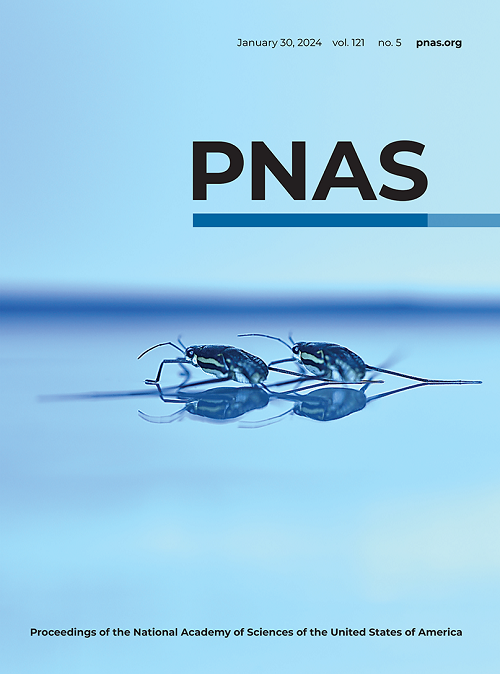SETDB1通过齿状回的代谢改变确保胚胎到成体神经干细胞的连续性。
IF 9.1
1区 综合性期刊
Q1 MULTIDISCIPLINARY SCIENCES
Proceedings of the National Academy of Sciences of the United States of America
Pub Date : 2025-07-23
DOI:10.1073/pnas.2424315122
引用次数: 0
摘要
胚胎神经祖细胞产生成体神经干细胞(aNSCs),其与星形胶质细胞具有转录组相似性,同时维持成体大脑中的神经发生。胚胎神经祖细胞如何在阻止星形胶质细胞命运的同时转化为aNSC以维持aNSC池尚不清楚。在这里,我们发现setdb1介导的代谢状态对于从胚胎神经祖细胞到aNSCs的转变是必不可少的。在齿状回发育过程中,组蛋白甲基转移酶SETDB1的缺失导致星形胶质细胞的产生增加,以牺牲ansc为代价,最终抑制神经发生。单细胞RNA测序揭示了Setdb1缺失后的特定代谢改变,特别是暗示细胞色素c氧化酶亚基6b2 (Cox6b2)-线粒体复合物的一个组成部分-是Setdb1的关键靶点。COX6B2调节氧化磷酸化(OXPHOS)控制星形胶质细胞分化的aNSC命运。升高的Cox6b2水平促进齿状回发育过程中星形胶质细胞的命运。因此,我们的研究结果揭示了神经祖细胞产生aNSC的连续性机制,从而在成人大脑中产生新的神经元,强调了通过aNSC将星形胶质细胞转化为神经元的潜在治疗策略。本文章由计算机程序翻译,如有差异,请以英文原文为准。
SETDB1 ensures the continuity of embryonic to adult neural stem cells through metabolic alterations in the dentate gyrus.
Embryonic neural progenitors give rise to adult neural stem cells (aNSCs), which share transcriptomic similarities with astrocytes while sustaining neurogenesis in the adult brain. How embryonic neural progenitors transit into aNSCs while preventing astrocyte fate to maintain the aNSC pool remains unclear. Here, we found that the Setdb1-mediated metabolic state is essential for the transition from embryonic neural progenitors to aNSCs. Loss of the histone methyltransferase SETDB1 during dentate gyrus development leads to increased astrocyte production at the expense of aNSCs and ultimately constraining neurogenesis. Single-cell RNA sequencing reveals a specific metabolic alteration following Setdb1 loss, notably implicating the cytochrome c oxidase, subunit 6b2 (Cox6b2)-a component of the mitochondrial complex-as a key target of SETDB1. COX6B2 modulates oxidative phosphorylation (OXPHOS) to control aNSC fate over astrocyte differentiation. Elevated Cox6b2 levels promote astrocyte fate during dentate gyrus development. Thus, our findings reveal a mechanism underlying the continuity of neural progenitors to generate aNSC enabling the production of new neurons in the adult brain, highlighting the potential therapeutic strategies for transforming astrocytes into neurons via aNSCs.
求助全文
通过发布文献求助,成功后即可免费获取论文全文。
去求助
来源期刊
CiteScore
19.00
自引率
0.90%
发文量
3575
审稿时长
2.5 months
期刊介绍:
The Proceedings of the National Academy of Sciences (PNAS), a peer-reviewed journal of the National Academy of Sciences (NAS), serves as an authoritative source for high-impact, original research across the biological, physical, and social sciences. With a global scope, the journal welcomes submissions from researchers worldwide, making it an inclusive platform for advancing scientific knowledge.

 求助内容:
求助内容: 应助结果提醒方式:
应助结果提醒方式:


